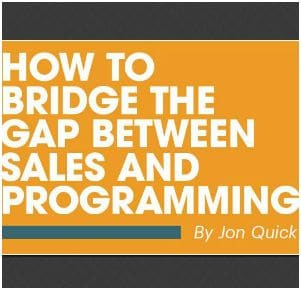
(By Jon Quick) In my three decades as a programmer and consultant, I’ve seen it far too often. You know the scene. A radio station is having a remote at the local Ford dealership on a Saturday morning. Driving by, you see the flimsy flag imprinted with the station brand flapping in the wind. If you were to stop — and I don’t know why you would — there would be a bored-looking DJ on a chair behind the prototypical folding table draped poorly with a curtain.
On the table are a few cheap pens and maybe some coupons for half-price Egg McMuffins. Nobody noticed, but the coupons are actually expired. Meanwhile, the DJ is checking his smartphone, just waiting for his next cut-in, oblivious to what few people might be wandering around. The salesperson who sold the remote is probably still home in bed. Then on Monday the client complains that there was little action.
It’s a classic case of programming not working with sales to produce results — not only for ratings, but for revenue. These days, more than ever before, the PD needs to be part of the sales team. No ifs, ands, or buts about it.
Whether it’s an advertiser remote or the content of the 12, 14, or 18 units an hour, there must be synergy between programming and sales to optimize the commercial parts of the station sound. Think about it. A PD programs the hour, but in many cases, the sales department “programs” up to 18 minutes of spots in that same hour. Fact is, a bad commercial will cause tuneout just as fast as playing a bad record, or, in the case of News/Talk, a bad topic.
For remotes, if the example I cited above is the best you can do, don’t do remotes. Back in the day, doing a live broadcast was an event that alone would attract people. Folks wanted to come and meet their favorite announcer and maybe even get an autograph. Alas, times have changed.
So put on that creative cap and make it an event. Bring in a high school marching band. A cheerleading squad. A rock band. Celebrities always work. You might just have to spend a little cash or convince the advertiser the extra expenditure will be worth it just to get people in the door.
Then, engage those people. Give them a free hot dog and Coke. Popcorn or cotton candy for the kids. Have the entire client sales team there. Get some of your other personalities to join. Dress smart, with station branding. Walk around and meet the customers, thanking them for listening and for stopping. I’ll never forget when a local car dealer had a young Peyton Manning appear for a couple of hours. The line was around the block. And, yes, he sold plenty of cars. The cost of Peyton easily paid for itself.
If you’re a programmer who believes that there should still be a wall between programming and sales, think again. We assembled a panel of the best minds in the business, in various positions and representing several perspectives within a media organization. Hear what they have to say. And if you read nothing else, read this:
Today it is essential that programmers be part of the sales team.
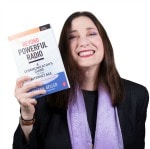
Let’s start with Valerie Geller, who has written about sales and programming synergies for decades.
An understanding of the revenue side of the industry will make anyone a better asset to the station. With an economy that has ups and downs, more on-air personalities and programmers have found a knowledge of sales to be important.
It was remarkable in the past how little some air personalities knew or bothered about the importance of commercials. They saw the spots as a “break” in the programming instead of an integral part of the on-air package. But a poorly done or boring commercial can be as much of a tuneout as any other bad programming. If a commercial is done right, and creates powerful radio, it will keep listeners engaged.
Salespeople are a different breed from the programming or on-air talent. We need both types to make a commercial radio station a success. The way sales and programming view one another can affect the success of a station.
It’s important that each side respects the work of the other. A lot of time is wasted because of distrust between sales and programming.
Salespeople often view talent, particularly on personality radio stations, as a liability. A salesperson lives in fear of the one careless remark that will blow up an account he or she has been working for months to acquire. The
talent, meanwhile, believes the sales staff would be perfectly happy running commercials 59 minutes out of every hour. Hosts feel that sales has no respect for the product they are selling and little idea of what it takes to build credibility with an audience. With some effort, both sides can reach an understanding.

Now let’s turn to a guy who’s seen and done it from every perspective. The storied career of Tom Langmyer covers many successful years as both a programmer and a general manager. Langmyer agrees that the concept of sales and programming working together isn’t new. He says:
More creativity and local product leadership is needed for radio to grow revenue through programming and sales partnerships. This goes way deeper than running a generic playlist and plopping the latest Nielsen ratings on the desk of a potential advertiser. Creativity and ideas that drive advertiser results win. It’s a group effort.
In fact, it’s extremely important leadership in all disciplines of our business to work together. We’re in the business of creating profitable content. What does that mean? For our News, Talk, and Sports stations, it means credible news and information, along with entertaining and compelling talk that drives listenership — and it means we serve our community. On our music stations, it means creating a music-based, entertaining experience that relates with listeners to achieve the same result. Since successful radio operations focus on local roots to drive growth, connections with local businesses are even more important. Our job is to move product with our product.
True broadcasters in any position at a station understand and respect the important distinction between “church and state” and must creatively work together to achieve the building of great, credible products — that are also profitable. There are few that can do this better than broadcasters. We’ve done this successfully as a business for decades. Cross-pollination comes in the form of lifestyle events, promotions, information, sports, and other things that have a place on our platforms.
For example, on our new station, KTI Country in Milwaukee, we’re partnering on concerts with major artists and venues in Wisconsin, and we’re selling them. They also have an on-air component that is tied to our brand. We produce numerous events and programs on our News/Talk/Sports WTMJ that serve the community. Businesses need and want to support those initiatives, too.
Today’s PDs must be involved in sales. Our product leaders attend weekly sales meetings, listen to needs, and help match programming features and ideas to advertisers. They go on sales calls. Our director of marketing and innovation is also key in the creation of NTR, events, promotions, and on- and off-air nonspot opportunities.
That said, the DOS and GSM are the drivers of revenue, the marketing/promotions people are the creators of events and the keepers of the cume, and, make no mistake, the PDs are the advocates of their brands and keepers of the quarter hours. On the WTMJ side, for example, our PD will work with partners on business reports or specialty programs. Meanwhile, on WKTI, our PD may be working on an event and programming that drives our visibility and drives traffic to a retail location or concert venue. WTMJ does a successful holiday radio show, a live radio play concept that involves talent, community leaders, athletes, and prominent advertisers.
Remember, audience drives programming. That’s always where things start. From there, the leadership team clearly defines the target, then the product, and finally, the branding that’s associated with it. Once that’s in place, specific elements on promotions, events, and programs can be collaborated upon. Either way, the overall strategy is bigger than the PD, SM, and GM. Our job is to create excellent product that fits the global product strategy to benefit our listeners and users — then leverage it to drive revenue.
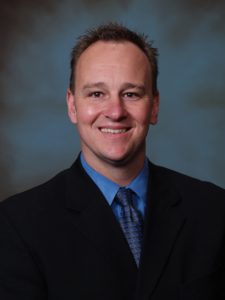
Let’s turn to a programmer who has much in common with Langmyer. Steve Moore is the veteran PD at KMOX in St. Louis. Langmyer was Moore’s GM for many years, and before that, he had Moore’s job. Let’s compare their thoughts.
Today’s smart PD works with sales to enhance the sound of the station (by paying attention to the production values and content of commercials) and coming up with better ideas. Eliminate saying “No” and start saying “No, but we could do…” and then offer solutions that make sense for all parties involved.
To stay involved in all aspects of the station’s business, I recommend PDs join in the occasional sales meeting and participate in the sales process. PDs should develop a deeper understanding of the revenue performance of their station, which will help them better understand why certain decisions are made.
Many managers say they have an open-door policy, but hesitate to deal with issues. Help yourself and your station by being a part of the solution to the problems. You don’t have to solve everyone’s problems, but your willing participation creates a more collaborative environment.
Make yourself available to go out on a sales call and to participate in solving a client’s marketing needs. PDs have a deep understanding of their local communities and their audience and can bring fresh, creative, and relevant ideas to the table. Open your mind to ideas other than your own.
The days of the PD’s solely focusing on talent and content are long gone. While talent and content creation remain as important as ever, the program director’s role in revenue generation is critical to the overall success of the station. I prefer to work closely with the GSM and develop content that serves our listeners as well as our local partners and ultimately drives revenue.
I work with our general sales manager and account executives on a near-daily basis. I regularly participate in sales meetings, create content with local partners in mind, participate in sales calls with the AEs, and brainstorm marketing solutions for clients. I have a holistic view of the business and understand the important role programming can play in driving revenue. The other benefit to working closely with our sales team is that I can protect the integrity of the content and ensure we keep our audience in mind as well as stay on brand. Working closely with our sales team encourages transparency and allows for better communication.
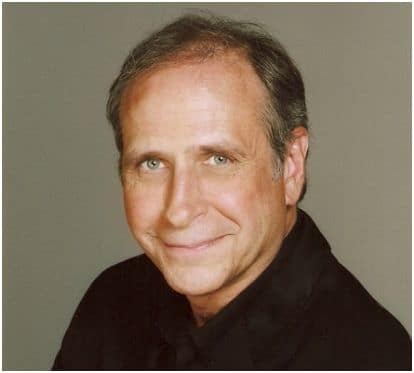
Next, let’s go down the street for a visit with a Rock and Roll Hall of Famer, KSHE’s Rick Balis. Hubbard got itself one of the best Classic Rock programmers ever as part of its recent acquisition of KSHE from Emmis St. Louis.
The synergy is absolutely necessary. Ideally, each department understands what the other is looking to accomplish. All must have realistic goals and challenges. It should be determined what areas of support are needed from others. The head of each of the departments needs to have product integrity in mind and a drive to reach and surpass revenue goals. Regular communication, flexibility, and compromise are key.
Attendance at sales meetings is key for today’s PD. A portion of time should be set aside for updates, questions, idea exchange, and problem-solving with the marketing directorand digital content manager on hand. In addition, the PD should be available to put a practical story to ratings for the sales team and available to paint an enthusiastic product picture for clients.
The PD should also take initiative and provide black-and-white ratings data that may be helpful to sales. Finally, with the marketing director and digital content manager, the PD should provide ample sales sponsorship opportunities with details months before needed for client presentations.
It sounds like Balis will get no argument from two of his new bosses, Ginny Morris and Greg Strassell. We visited with them together.
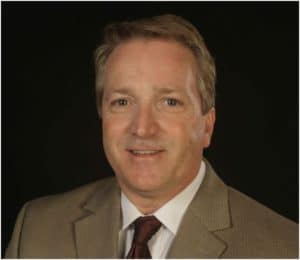
Strassell: The best programming minds understand the need to partner with the sales manager. It creates less friction internally when both teams are working together to reach their goals, from the top down. Programmers must care about the ROI of their brands. Ratings are a major part, but I have seen the higher the passion for a brand and talent, the better the return for the client. If your product is a contributor to a client success, they’ll be back.
Morris: As always, it is critical that sales and programming leadership work together as a team and set the tone for their respective departments. Mutual respect is an important part of creating a trusting relationship — partnership, really — to best serve the listening audience and our valued clients. The sales team needs to have a keen awareness of the goals of the programming team, and vice versa. It’s the job of the programmer to protect the integrity of the brand. It is also the job of the programmer to find creative ways to help our clients, those folks who ultimately pay the bills, to accomplish what they need to accomplish when they invest in our brands.
Strassell: Long-term, strategic planning for the PD and GSM is critical. The time spent on this means fewer fire drills of wasted time throughout the year. The market manager should make it a priority to go off-site and get the department heads to develop the blueprint for success and ways to achieve the budget needs. Communication is the second major step.
Sales must understand the product strategy and goals the programmer needs to accomplish. The best sales vehicle is a winning brand that is compelling to the audience. Product integrity must remain high, and sales leadership must understand that. Have product filters — share the lifestyle descriptor of the target demo.
The programmer should know the overall revenue goals and be brought into the monthly financials. Celebrate the wins together.
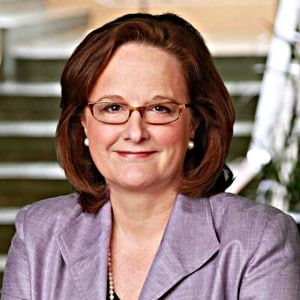
Morris: Programmers need to understand and appreciate the goals, large and small, that the company has for the sales leaders and their teams. And the programmer should be invited into the process of strategizing about how their sales partner can reach their goals and deliver the best possible result for the client in a way that enhances the listening experience for our audience.
Strassell: Programmers and talent should also be available for major client meetings and consider sending thank you notes to returning clients. For major client asks, it helps a PD to understand the client needs early, to develop solutions. Not every client ask is going to be approved, but in most cases, there should be a creative solution to get to “yes” to achieve product and sales goals.
Morris: Depending on the circumstances and the personality of the PD, a sales manager’s best weapon on an important call can be his or her PD. Clients love hearing about how radio is made and what the “secret sauce” of a particular brand is. PDs should understand the profile of the listener in a way that can help inform the clients of the best way to talk with them.
Same goes for talent. If an on-air talent is going to endorse a product, they should know the client personally, and know them well.
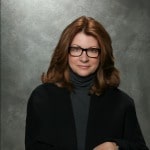
Of course, as we selected our panel, the president and CEO at the Radio Advertising Bureau, Erica Farber, was an obvious choice.
It is extremely important for sales to work in synergy with programming. In fact, in today’s environment, it is an absolute necessity. PDs today are radio’s content curators and have the responsibility for building our brands.
They are a tremendous source of information and inspiration, and play an important role in working with sales to help create real solutions for advertisers.
Radio sales today is not about selling spots to advertisers. It’s about developing relationships that solve a problem and/or answer a specific need for an advertiser. With so many assets available to the seller, it is important the PD consistently educates the sellers as to the focus of their brands and how best to communicate with the audience, and help provide direction on how best to call for action by that audience. It’s a truly important partnership between sales and programming.
First, PDs and talent both should be involved on a regular basis in meetings with the sellers. The frequency is certainly up to the individuals, but it needs to be part of a regular communication, and not just on a need-be basis.
Secondly, for qualified sales leads, PDs and/ or talent should be included in face-to-face meetings with key clients. We sometimes forget that talent at our stations are closer to a client’s customer than we are, and they have compelling stories to share. They are our stars, and it goes a long way with clients. Think about scheduling meetings at the radio station and invite clients for a tour and to meet with talent when they are off the air. It is a big deal.
Endorsements by on-air personalities continue to be important. Of course, you don’t want to overexpose the personality with too many because it will affect their credibility, but they can all handle several. Keep track of their favorite car, where they like to shop — or are there local products or services they support? Talk about built-in leads. This is a great way to open a door with a client and create a successful long-term relationship.
Mick Anselmo has an impressive resume, including SVP/market manager for CBS Radio in Minneapolis and Minneapolis market manager for iHeartMedia. Retired now, Mick is giving the walleyes and muskies a run for their money in “The Land of 10,000 Lakes.” He agreed to take his hook out of the water long enough to talk to us about the art of synergy he developed at all his operations.
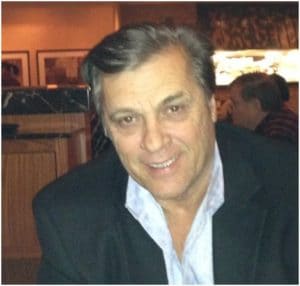
Some industry people believe that sales and programming working together is
something new. I believe it’s been a long, evolving cultural change that has continued to flourish over the last two decades. Everyone at the station understands today that our departments are all connected through sales and revenue. The question becomes how you become creative with revenue opportunities while keeping your stations clean, focused, and sounding “on brand.”
One answer is to live the integration of sales and programming every day in a positive manner. All key stakeholders, including the GM, PD, and sales manager, need to be on the same page. Positive behavior needs to be reinforced by the GM to all parties.
Let’s say a significant sales opportunity arises, and sales brings the opportunity to an ops meeting. If the PD understands that his or her role is to help secure the revenue for the station, he or she can help evaluate the request, and if it doesn’t work for the brand, say, “That won’t quite work, but what if we do this?”
The “No, but how about..?” response is positive, creative, and shows a willingness by programming to interact with sales and vice versa. Programming and sales should work together more on the front end of projects to ensure positive results for the stations and the advertisers. Coaching of both the PD and sales manager can be done through one-on-one discussions with the GM. In those meetings, the GM should be clear about the expectation of department heads working together to achieve positive results for the stations. Be consistent in that messaging, and positively reinforce whenever possible.
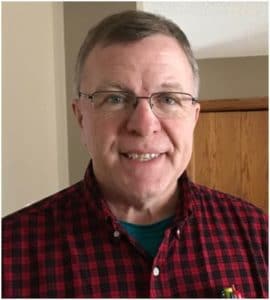
What about the smaller markets? For that perspective we call upon multi-time Marconi nominee Jim Bartels, who serves as GM for KNUJ/New Prague, Minnesota, and VP of operations for Ingstad Broadcasting Minnesota.
Our markets do an annual strategic planning meeting, and programming is always invited to attend. Just seems to make sense to have them involved, and they work off the same strategic plan as sales. When we approach putting out new sales packages that have any effect on programming, our sales manager gives the program director a copy to make sure all looks good and that they are aware of any tie-ins that would come their way. This also allows programming to provide any comments or requests for changes.
Whenever we are brainstorming a new promotion for the station, our program director is always brought in for input. Our PD knows we need to make sales, but it also needs to have the right punch for programming.
Sales drives the engine at our stations. But we know it needs to mesh with programming so that we reinforce and complement our objectives. We also think it’s so very important that our announcers visit clients occasionally and thank them for being a marketing partner for our station. We all need to get better at that.
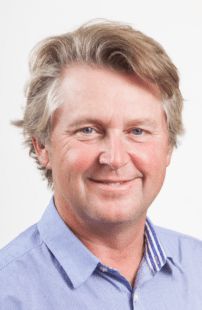
Finally, let’s cross the northern border and check in with a top Canadian broadcaster, eh? Jim “JJ” Johnston is CEO, president, and chief talent coach for JJ International Media/Management Solutions in Toronto. Previously, JJ was a longtime executive at Corus Entertainment.
We have three clients: our audience, our clients, and ourselves. Think about that: If you treat and respect your co-workers like you treat your audience and your clients, there is great value for all our customers, more creativity, and fewer issues with the process and environment.
If sales and programming commit to this philosophy, there is truly teamwork, and great results without the unnecessary drama.
Good program and promotion directors ones usually have a lot of ideas, and don’t get to use all of them. When sales comes forward, we usually think they are trying to do co-branded promotions. This is often the case, but really, they are looking for solutions to client issues that can be handled through independent commercial campaigns. It’s fun to brainstorm for the gems and solve client problems. That is value added.
If a sales manager or rep does the work — the client needs analysis — and has helped identify areas of opportunity, program and promotion directors can be their best friends to develop powerful standalone ideas that don’t need to be station-branded and can run out of sales time.
Remember, the three-client philosophy adds up to value for all involved.
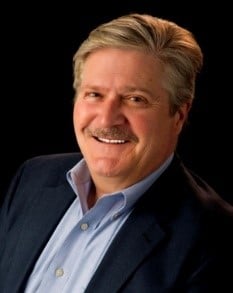
And this final note from me:
It’s remarkable when you think about it. Conceptually, there are no market sizes any more. The smallest stations can be heard around the world just as easily as the largest brands. With the plethora of traditional and new platforms available to us, it’s an extraordinary opportunity to put together packages that can target the masses, or hyper-target certain demos and even neighborhoods. It’s time to be creative and build a team that truly works together, from making sales to producing sweet ratings success. Every person featured in this article today is an innovator and knows how to use all the tools we have today to create truly remarkable marketing, leaving the naysayers in the dust. Today radio still rules more than ever — and in ways Marconi never dreamed about.
Jon Quick has programmed for CBS and Emmis, among others. Today he consults many radio brands and owns a public relations and advertising agency. Jon can be reached at 317.432.0309 or [email protected]

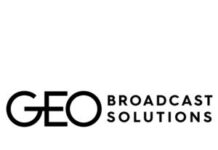

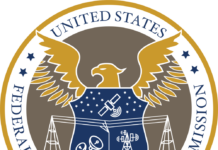
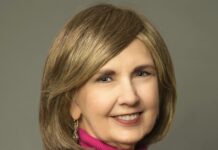


Thanks Terry!
Excellent article, Jon! I shared it with my entire staff immediately and placed emphasis on it for my PD’s and Sales Managers. While much of this isn’t new, it was a terrific reminder and the kind of reminder that some of us need often.
Thank you!